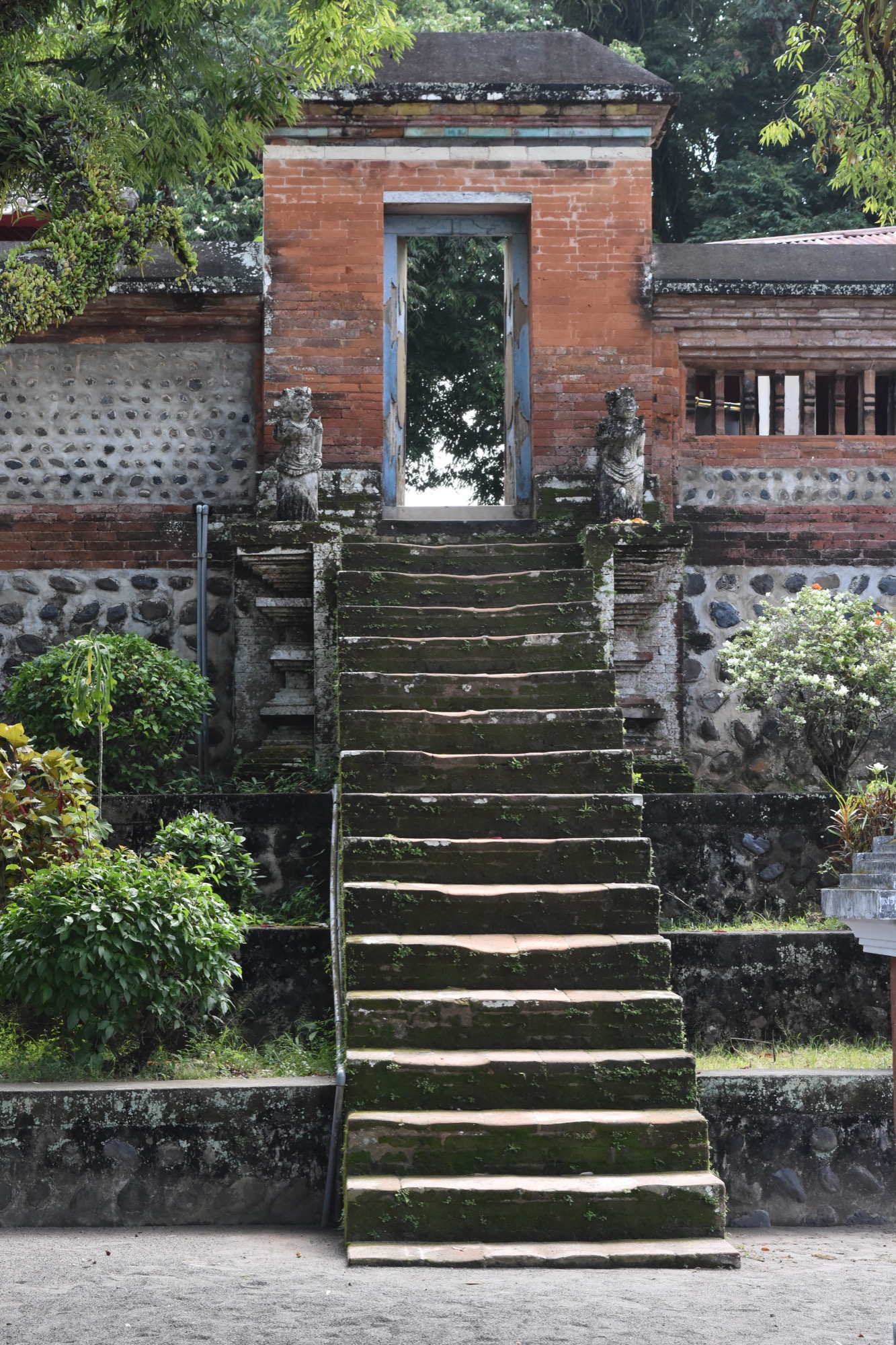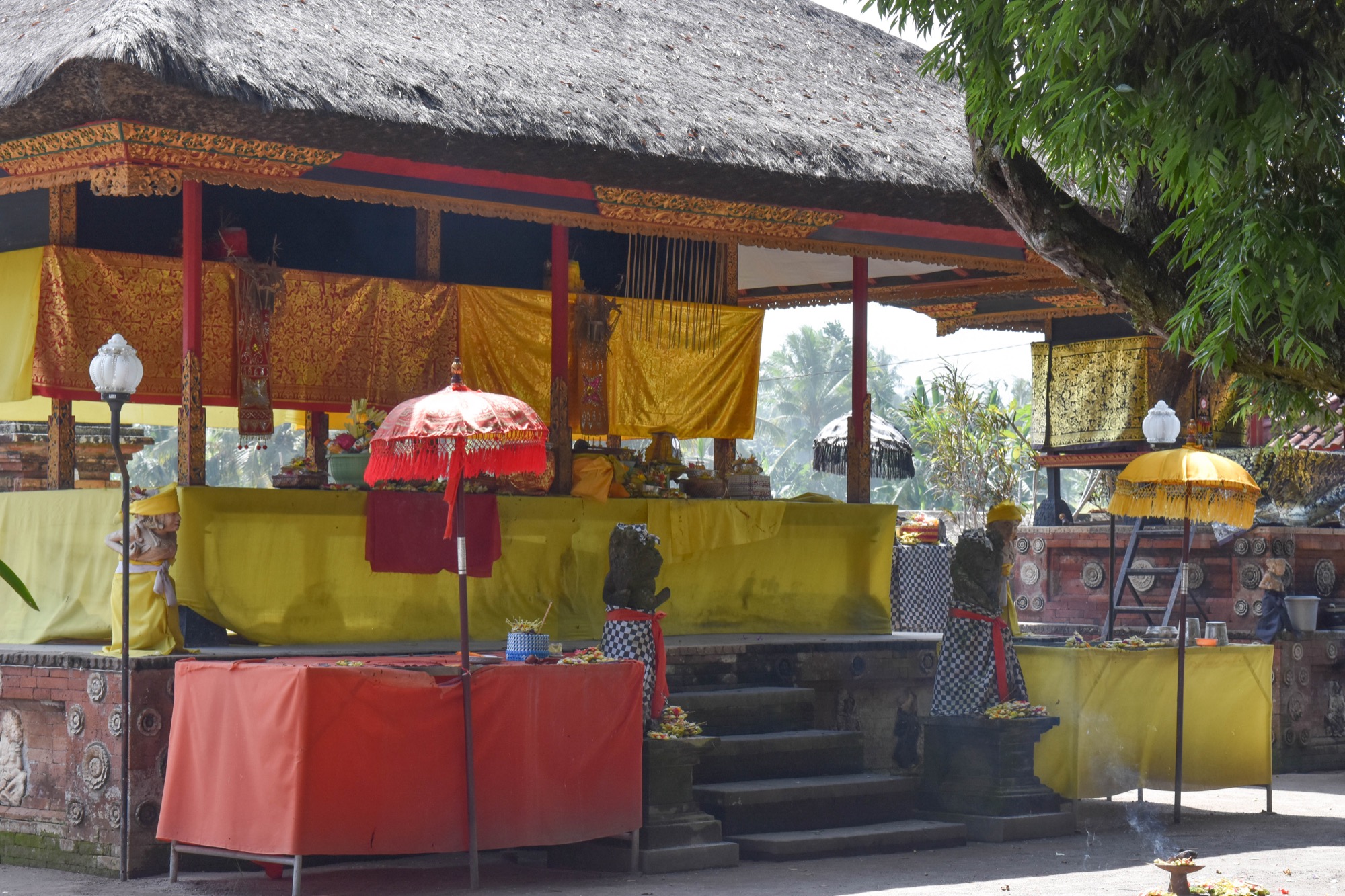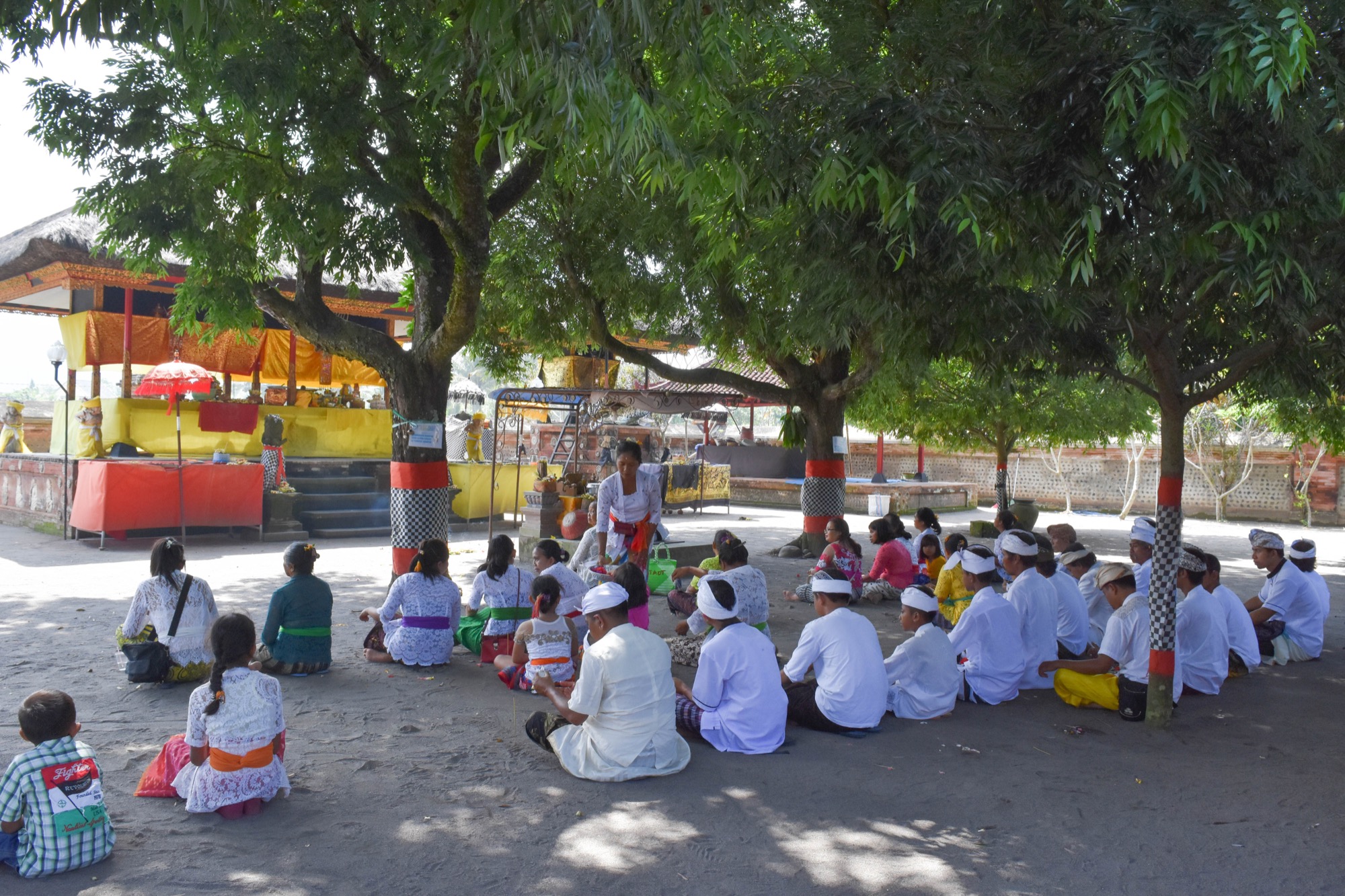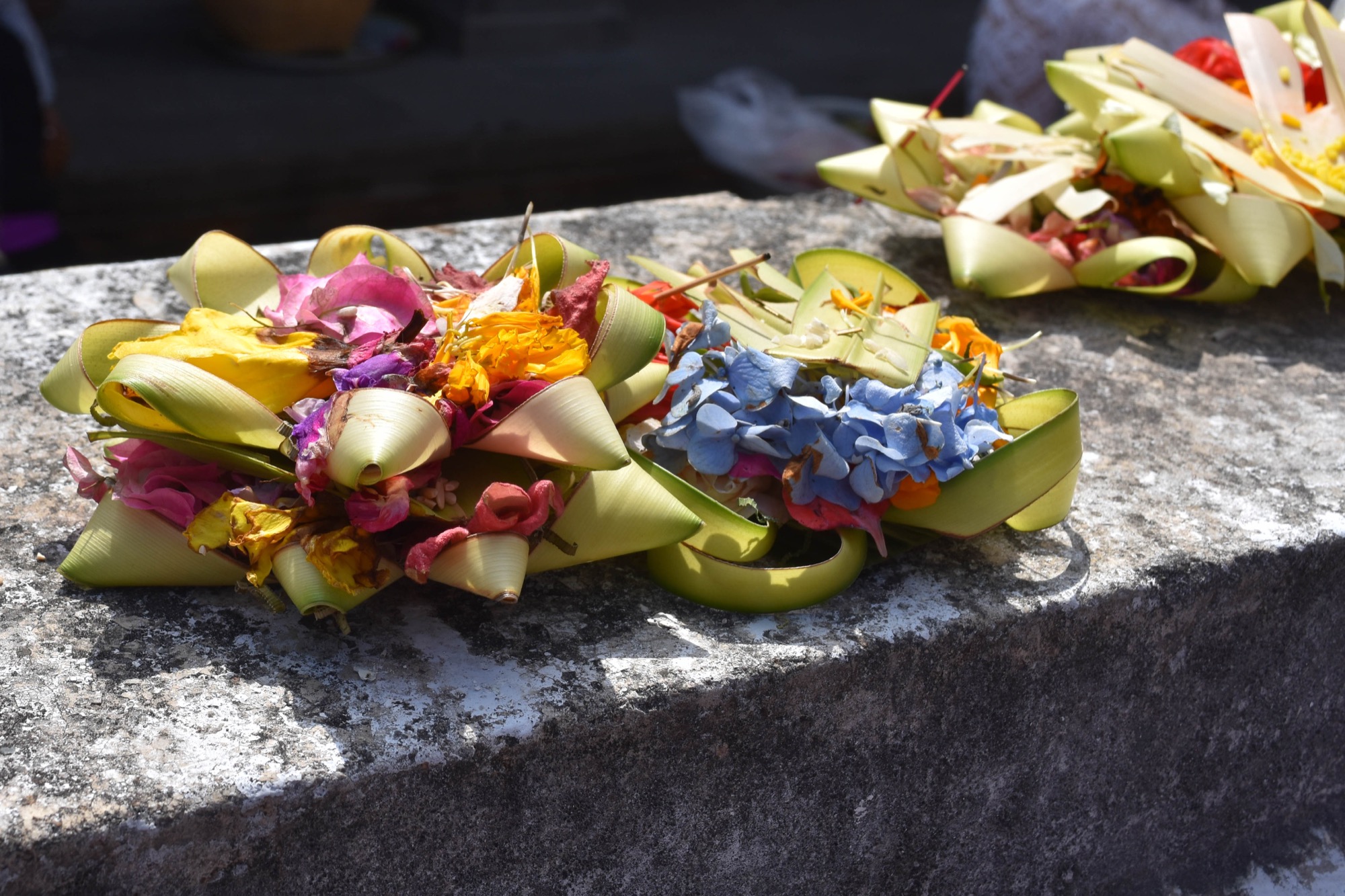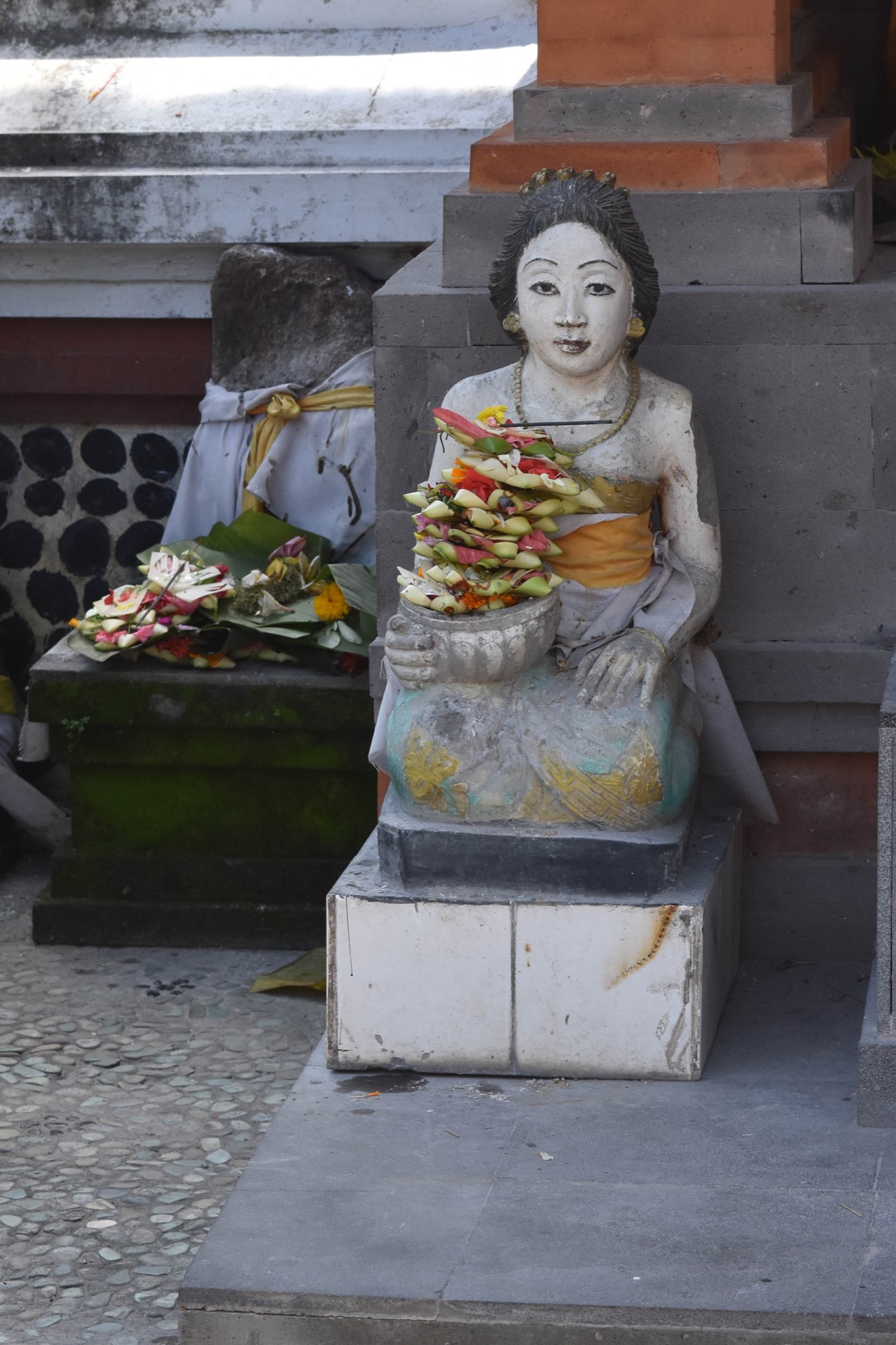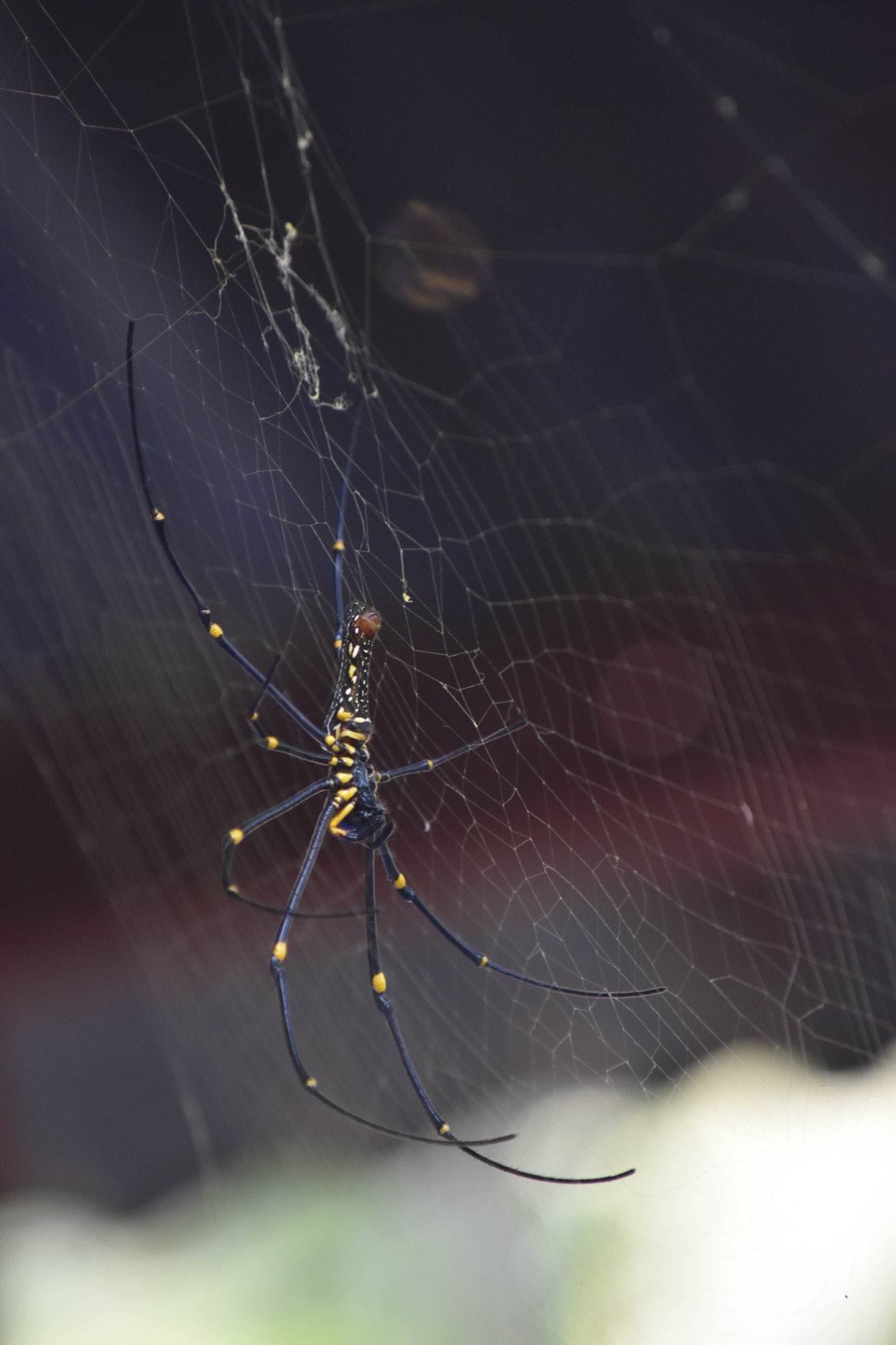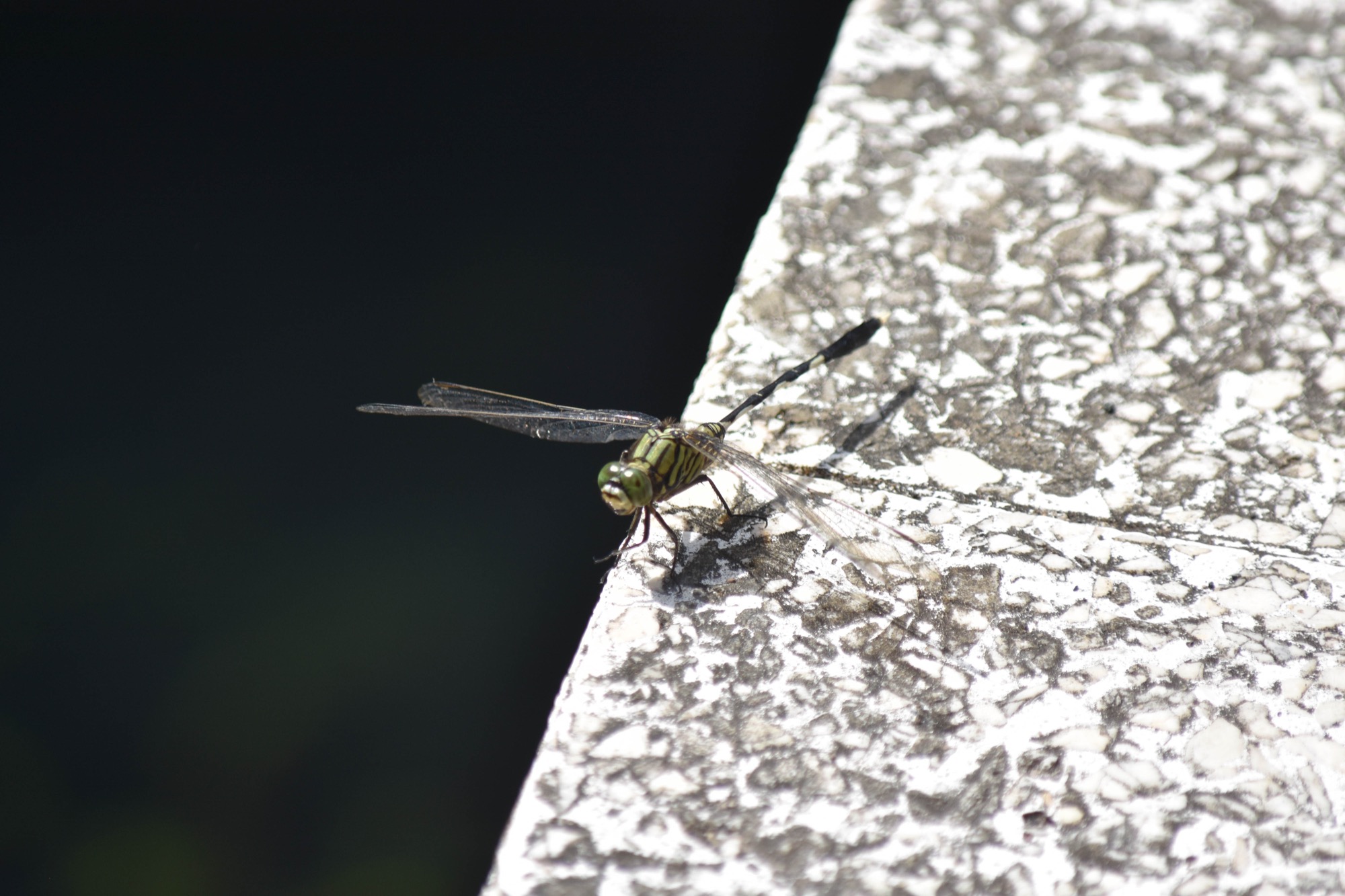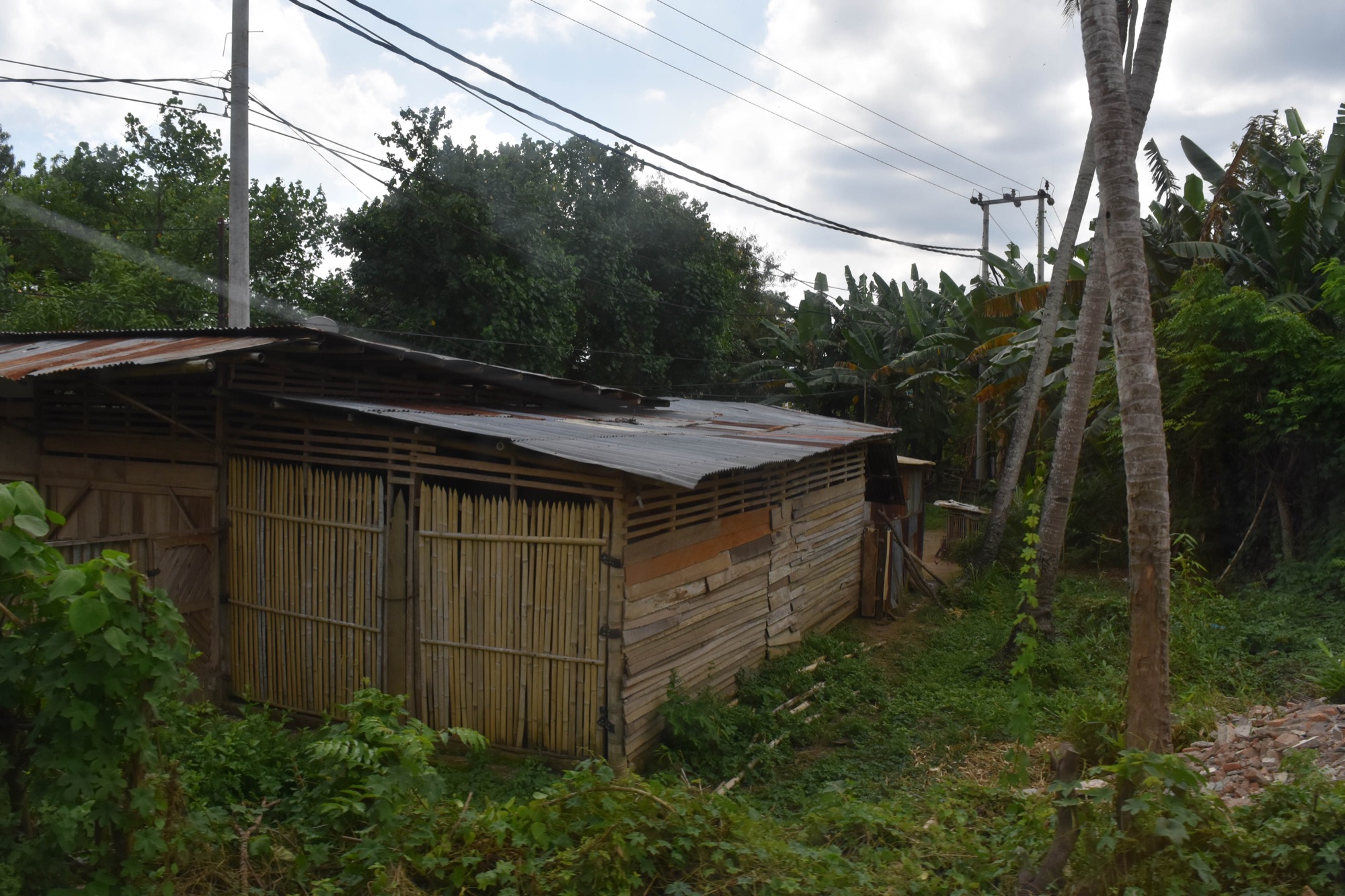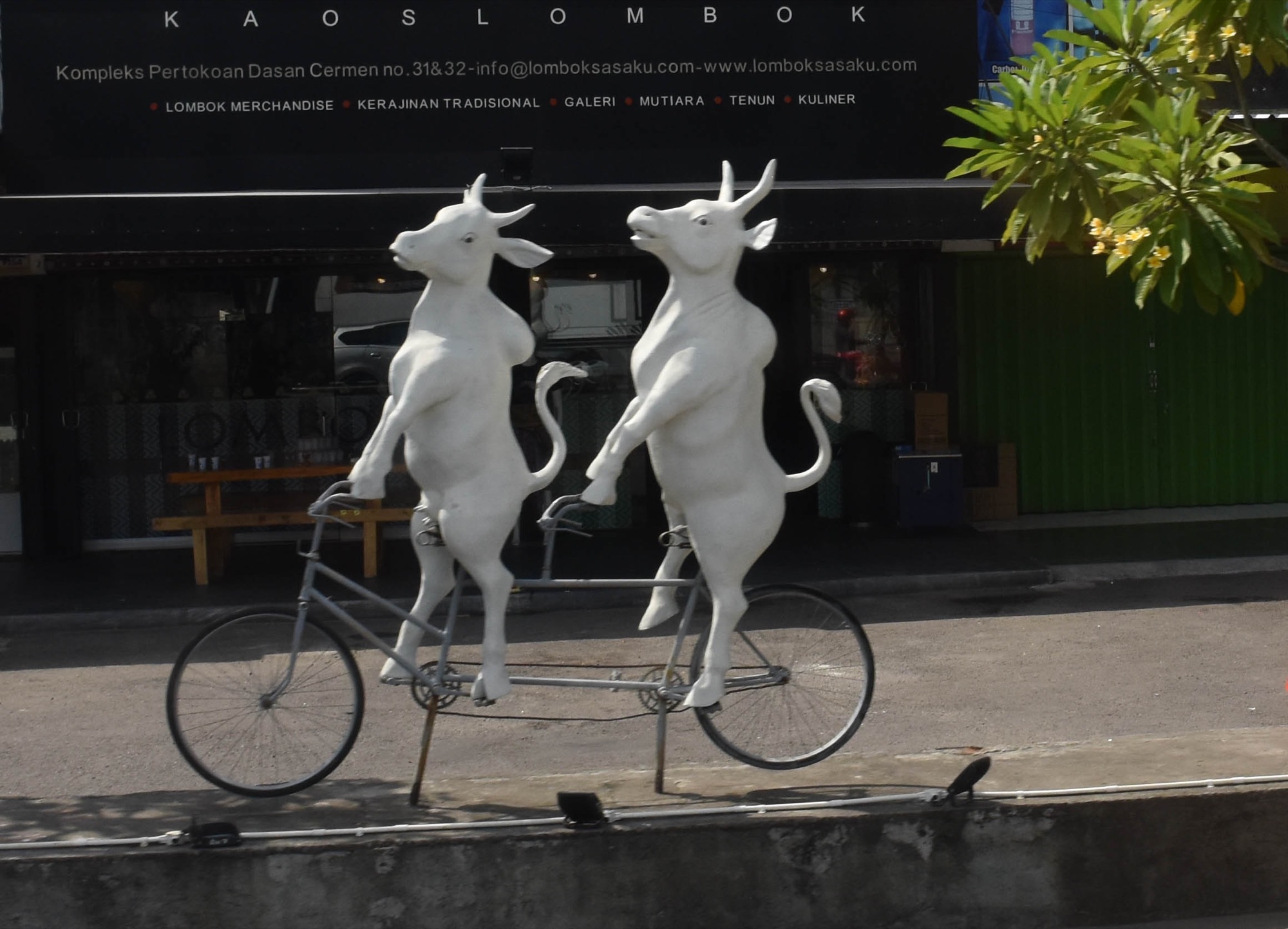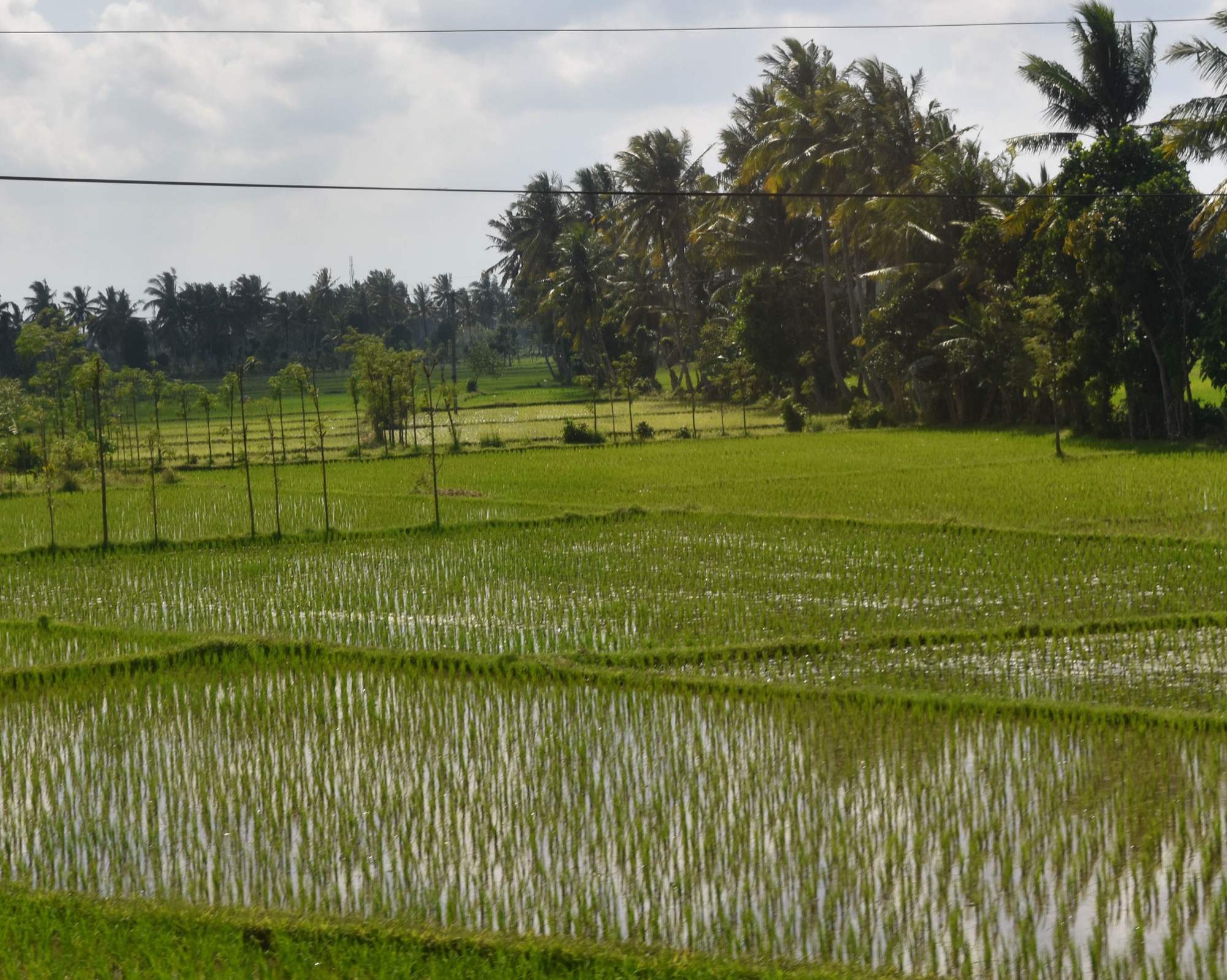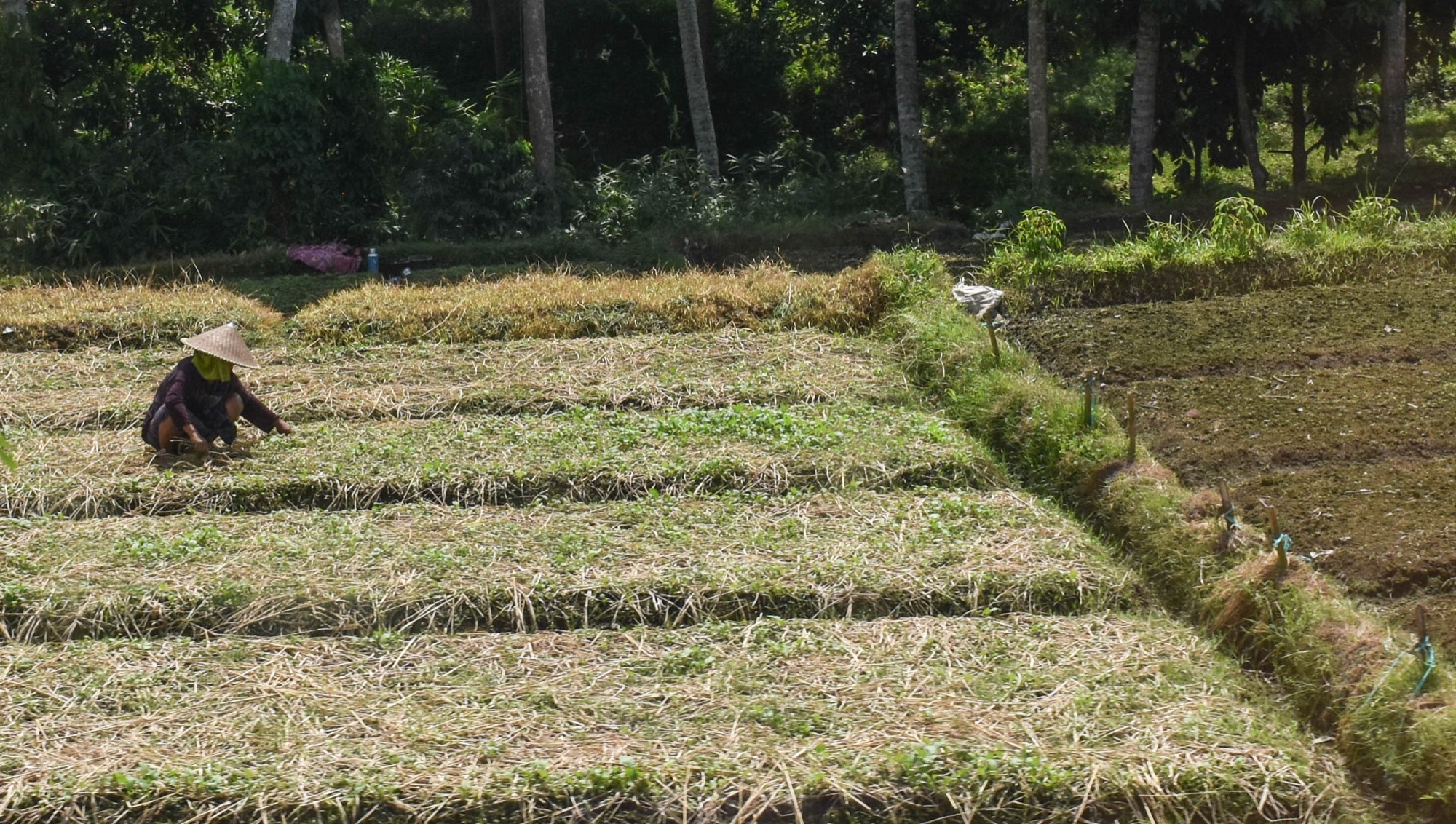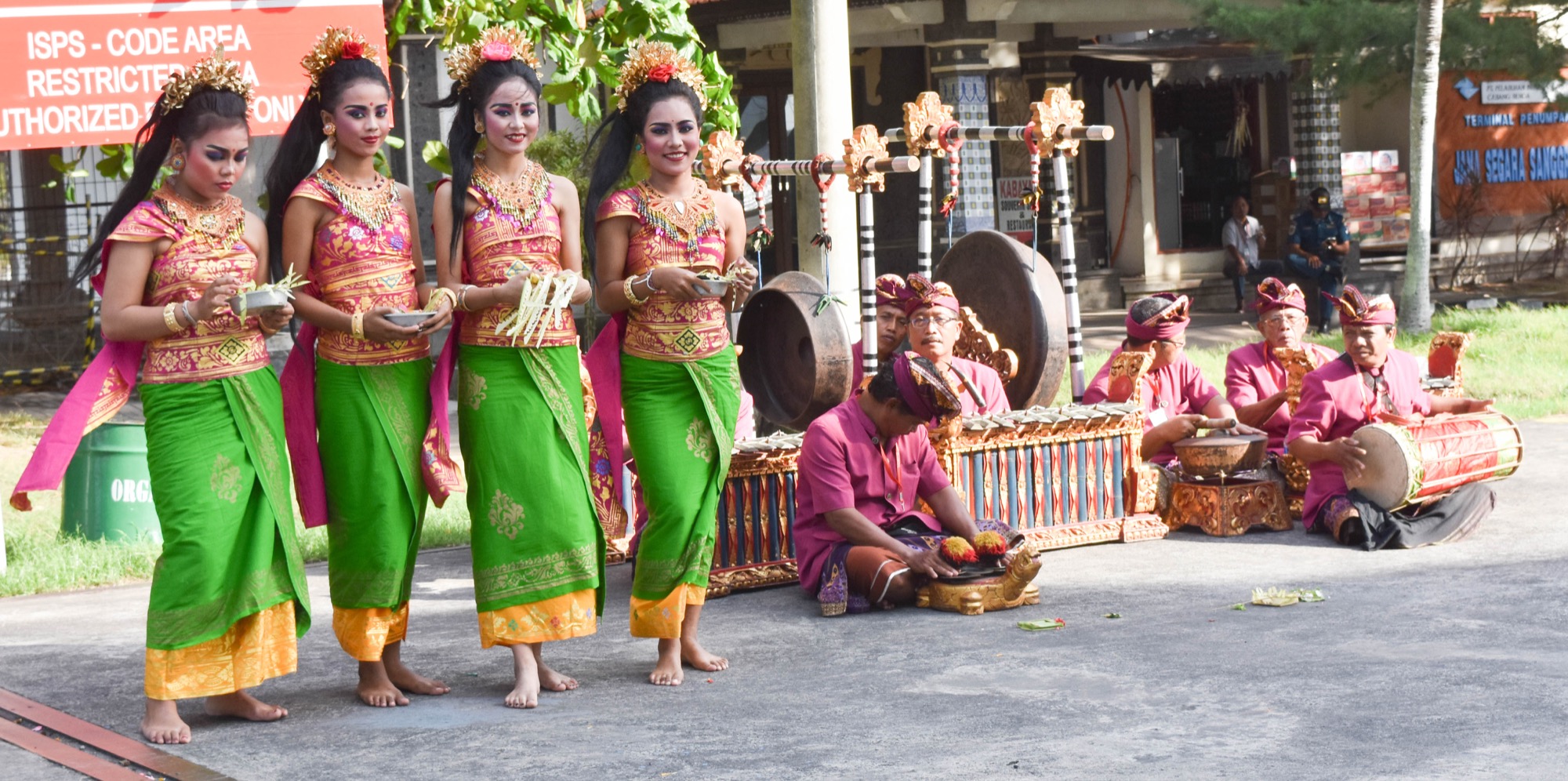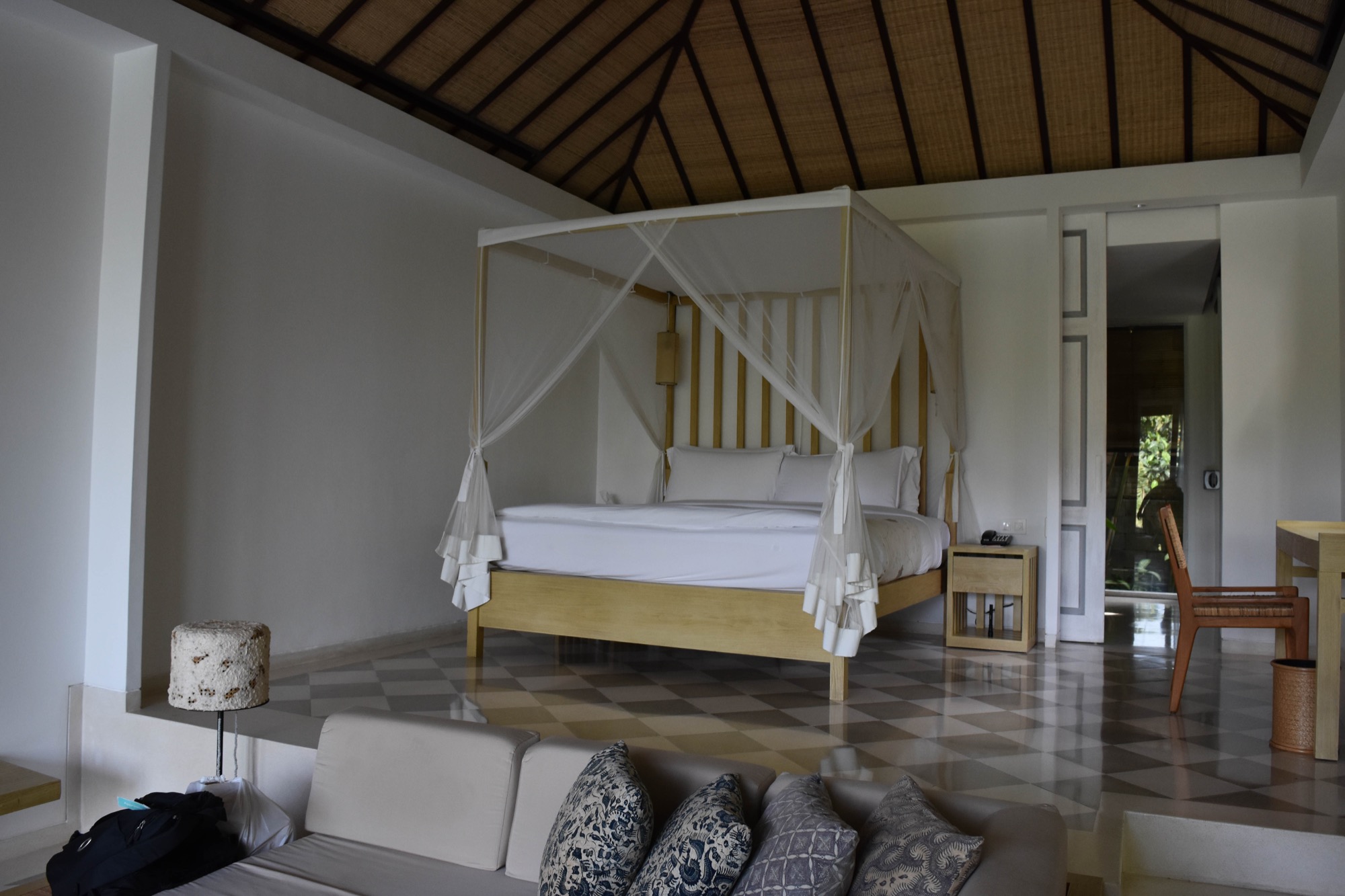Lingsar Temple
Lingsar Temple is unique in that it is a multi-denominational temple used by the Balinese Hindus and the Wektu Telu Muslims, which combine local beliefs with Islamic beliefs. The temple was originally built in 1714 by King Anak Agung Ngurah.
We entered through the candi bentar, or split gateway. There are statues to local deities throughout the temple complex as well as a cleansing fountain where people go to purify themselves before offering prayers.



